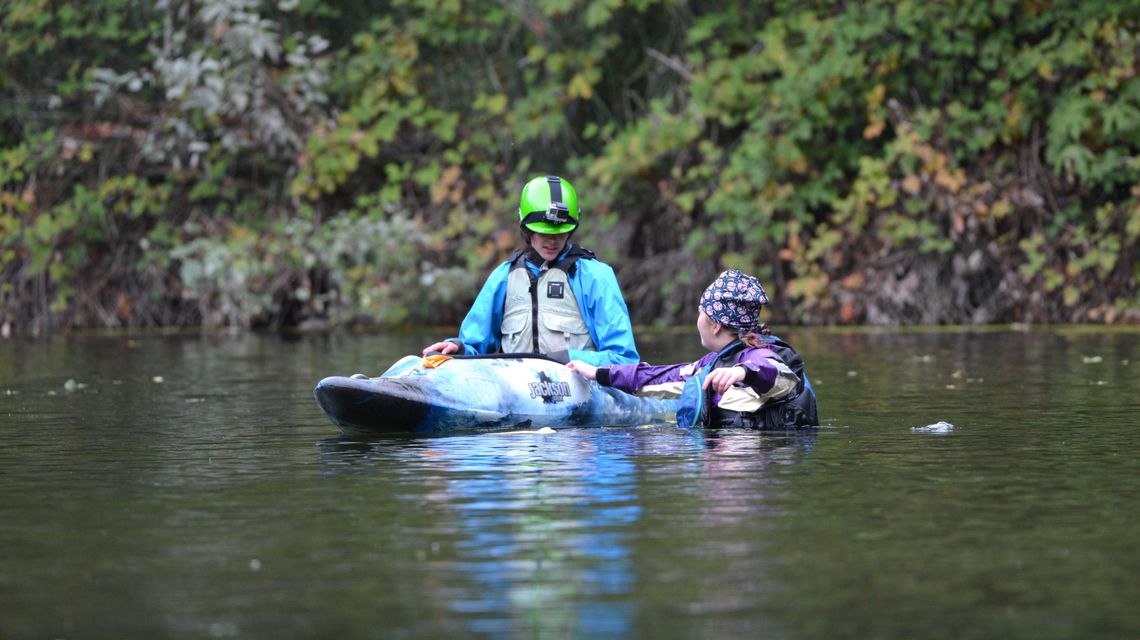
A guide to whitewater kayaking in Ashland area
ASHLAND, Ore. — No extraneous thoughts enter your head. Your focus is razor clear as you instinctually drive towards a singular objective. To breath! Zen masters and meditation experts have boasted how concentrating on breathing can bring inner peace, dissolve anxiety, and unleash creativity. Well, if this is the case, whitewater kayaking certainly has the potential to bring mindfulness to your breathing skills, because when you find yourself sealed into a capsized kayak with its bottom facing the big blue sky, let’s just say breathing becomes primal.
Many photos of whitewater kayaking depict pulsing waves and raging waterfalls that often envelope the paddler in a sea of water. These types of images may seem extreme or even scary, but to an experienced whitewater kayaker, these moments provide clarity and intense moments of concentration. What you don’t see in these pictures is the progression the kayaker went through to get to this point. I suggest starting on flat water and learning to focus on the breath because ultimately you will face the obvious reality that you can’t breathe under water.
Ashland has an amazing place to first dip your paddle into the water. It’s called the Granite Street Swim Reservoir located in Lithia Park. Yes, Ashland’s favorite swimming hole provides the perfect location to start your kayaking journey. The reservoir has water year-round and plenty of space to hone your paddling skills. But perhaps most importantly it provides a place to get your head under the water, and learn to manage your “headspace” while upside down in a kayak. For many people this is the biggest obstacle to whitewater kayaking. Finding comfort while under the water is essential in kayaking and mindfulness plays a key role.
Mindfulness is the art of being conscious of the moment. Flipping your kayak over in shockingly cold water and hanging out upside down as water rushes into your nostrils is about as unnatural as it gets. We rarely find ourselves in this situation, and for this reason alone, it can help focus one’s awareness. When you first learn to overturn your kayak, you practice what’s called a “wet exit.” This essential first step empowers you to focus on a few simple tasks; find the grab loop, pull the skirt, roll out of the boat, and find the surface. It’s simple, it’s effective, and I guarantee you will not think of anything else while performing this task. When I teach this skill, I first have students hold their breath for at least 30 seconds, which is about twice as long as it takes to perform a wet exit. As they get better at the task, I have them pause before pulling their spray skirt. After about 10 times, many students realize they have plenty of breath to get out of the boat if they accidentally capsize. This conscious awareness is the first step to kayaking and forms the foundation of learning to roll the kayak and eventually right your kayak in swirling whitewater.
Kayaking embodies these mindful steps and if you reflect on them, they can help bring clarity to other parts of your life. In fact, many seemingly daunting tasks start with a simple step. So, the next time you see a kayaker effortlessly caressing their boat through the rapids, consider that their first step most likely focused on conscious breathing.
This is an unedited user writing submission. The views, information, or opinions expressed in this article are solely those of the author and do not necessarily represent those of Best Version Media or its employees.
